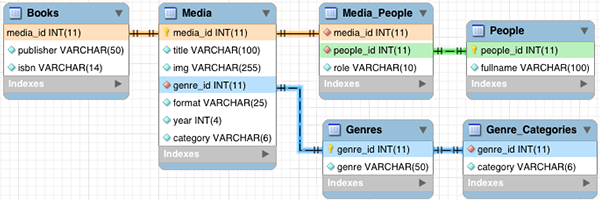Heads up! To view this whole video, sign in with your Courses account or enroll in your free 7-day trial. Sign In Enroll
Well done!
You have completed Integrating PHP with Databases!
You have completed Integrating PHP with Databases!
JOIN is a method for combining, or joining, together data from multiple tables. We’ll use JOIN to add the extra details we need from our Genre and Books tables. We’ll also explore another fetch method.
Database Diagram
Links
WHAT IS A SQL JOIN?
SQL Basics course
Database Foundations
Example Code
<?php
try {
$results = $db->query(
"SELECT title, category, img, format, year,
publisher, isbn, genre
FROM Media
JOIN Genres ON Media.genre_id=Genres.genre_id
LEFT OUTER JOIN Books
ON Media.media_id = Books.media_id
WHERE Media.media_id = ?"
);
} catch (Exception $e) {
echo "bad query";
echo $e;
}
$item = $results->fetch(PDO::FETCH_ASSOC);
Related Discussions
Have questions about this video? Start a discussion with the community and Treehouse staff.
Sign upRelated Discussions
Have questions about this video? Start a discussion with the community and Treehouse staff.
Sign up
You need to sign up for Treehouse in order to download course files.
Sign upYou need to sign up for Treehouse in order to set up Workspace
Sign up